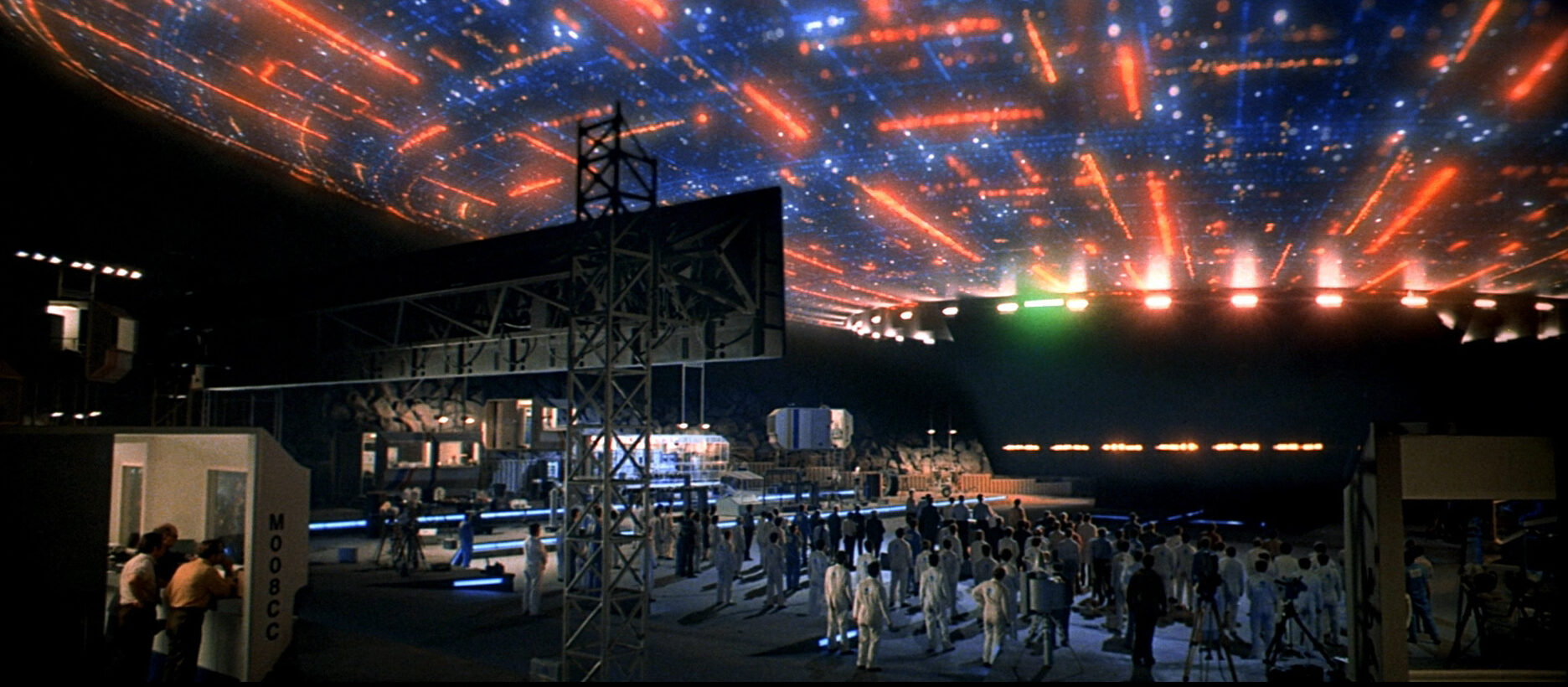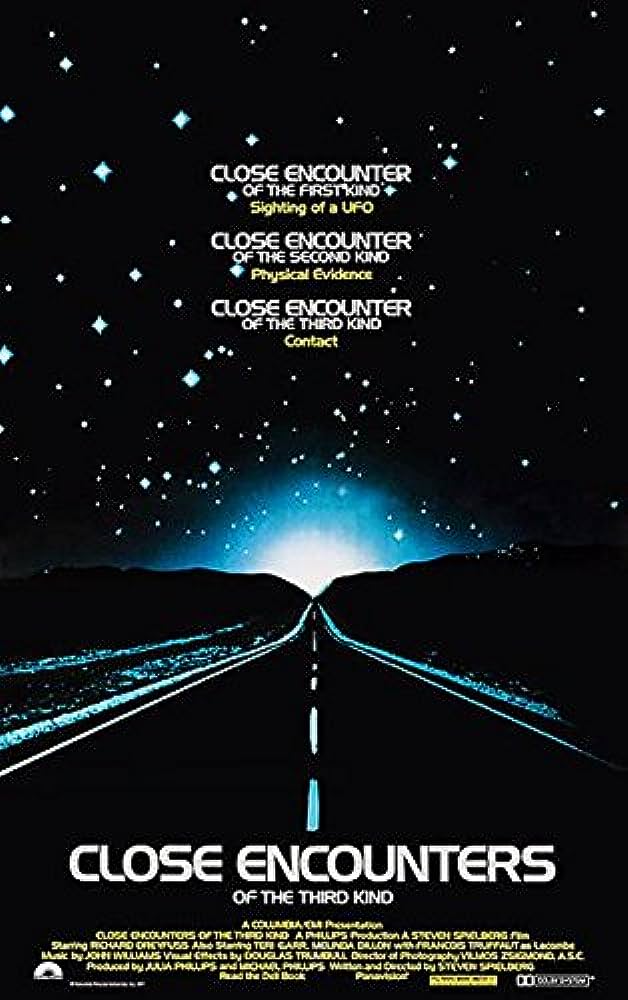

“He says the sun came out last night. He says it sang to him.”
Close Encounters of the Third Kind is Steven Spielberg’s clearest expression of the thoroughly new age notion of vague, mystical, ineffable experience as a suitable substitute for genuine religion. After witnessing a UFO fly over the Middle of Nowhere, Indiana, blue collar worker Roy Neary (Richard Dreyfuss) becomes obsessed by an indistinct, subliminal vision that manifests as mountains of shaving cream, mashed potatoes, clay, houseplants—anything the obsessed man can get his hands on and manipulate, to the dismay of his wife (Teri Garr) and children—ultimately pulling him in the direction of Devils Tower, the archetype of his compulsive models. Numerous other misfit dreamers are drawn to the awesome landmark, where a dazzling celebration of lights and music brilliantly bridges the communication gap between mankind and their extraterrestrial visitors. It’s a moment of pure cinema that no other medium could produce, a sublime spectacle of sound and image.
The events leading up to this serene apotheosis are well conceived, as numerous individuals feel the same urge as Roy and are slowly but inevitably consumed by their obscure, telepathically implanted impulses—among them a single mother (Melinda Dillon) searching for her abducted child (Cary Guffey) in whom Roy finds a kindred spirit. Meanwhile, a French scientist (François Truffaut) and his assistant/interpreter (Bob Balaban) lead an investigation into the mysterious reappearance of various military aircraft that were thought lost but are now popping up in unexpected places without any trace of their crews.
Where some look to drugs or meditation or what have you for an alternative to the spiritual pursuits of traditional religions, Spielberg sees the magic of cinema itself as a source of ephemeral wonderment. One can read the film as a metaphor for Spielberg’s spiritual worldview. His aliens are the gods of cinema—mysterious, benevolent beings that come not from “out there” but from the heavens themselves, that descend in a bedazzled chandelier to bathe us in nostalgia and reunite us with those who’ve passed on and create an entirely new social paradigm that is scary and exciting at the same time. Just as Roy continues to improve on his rudimentary sculptures because he intuits that something magnificent might be coaxed out of the chaos, so Spielberg is bent on iterating his themes in pursuit of a transcendent, ecstatic, numinous experience. Not just to depict characters in such a situation, but to evoke within the viewer themselves, right there in the movie theater, a sense of confrontation with something totally alien and awe-inspiring.
This is Hollywood’s misguided mysticism at its finest, enhanced by the young Spielberg’s passion for his craft and his team of ace collaborators.